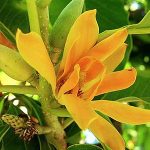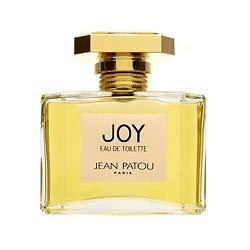The Champa flower
 Rabindranath Tagore, the greatest poet and Noble Prize winner for literature has written a beautiful poetry which describes impish yet a very tender and affectionate relationship between the mother and child titled ‘The Champa Flower.’ In this poetry the child asks his mother – ‘how would have it been if he was a Champa flower, just for fun, and grew on a branch high up on the tree, and shook in the wind with laughter and danced upon the newly budded leaves’. The poetry narrates the child’s vivid imagination, mother’s anxiousness about her child’s wellbeing. And, whenever I read this beautiful poetry I feel Rabindranath Tagore chose Champa flower as theme of his poetry because of its attractiveness and exuberance!
Rabindranath Tagore, the greatest poet and Noble Prize winner for literature has written a beautiful poetry which describes impish yet a very tender and affectionate relationship between the mother and child titled ‘The Champa Flower.’ In this poetry the child asks his mother – ‘how would have it been if he was a Champa flower, just for fun, and grew on a branch high up on the tree, and shook in the wind with laughter and danced upon the newly budded leaves’. The poetry narrates the child’s vivid imagination, mother’s anxiousness about her child’s wellbeing. And, whenever I read this beautiful poetry I feel Rabindranath Tagore chose Champa flower as theme of his poetry because of its attractiveness and exuberance!
We find some half a dozen varieties of Champa. Kath Champa flowers are strictly not summer flowers, as they will remain in full bloom from spring to right beyond the rainy season. Whereas the brightest red among them is called ‘Gulancha’ – a rather poetic name which Rabindranath Tagore named. Please do visit Shantiniketan, you will find a verity of Chapma trees red, white, faint yellow, green. Tagore was fond of nature, and flowers find coveted place in his writings too.
The fragrance of Champa is placid. It is popular for its delicate scent and has been a part of the Indian culture right from ancient days. It is used in religious ceremonies especially for Goddess Laxmi. Champa flowers are used to make some of the world’s most expensive perfumes as well. It’s called Chaaphaa in Marathi, Chenbakam in Tamil, Chenbagam in Malyalam, Shornochampa in Bengali, Cempaka or Sampangi in Telgu and Sampige in Kannada.
 The flowers are used in Southeast Asia for several purposes. Especially in India, they are primarily used for worship. It is a very famous patterned tree. But very few know that the tree can be a very good Agro forestry tree as well. Golden Champa (Michelia) is an evergreen tree and mainly cultivated for its strongly fragrant yellow or white flowers. The beautiful yellow colour of the flower is used for extracting yellow dye, which is a base for other colours. An aromatic scent of the flower is used for commercial purpose; there is a famous ‘Joy’ perfume sold in the market which it seems is the most expensive perfume in the world; hence sometimes Champa tree is also called as Joy Perfume tree. The Golden Champa is a well-known, tall, handsome tree with a straight trunk and spreading branches, and belongs to the plant family ‘Magnoliaceae’.
The flowers are used in Southeast Asia for several purposes. Especially in India, they are primarily used for worship. It is a very famous patterned tree. But very few know that the tree can be a very good Agro forestry tree as well. Golden Champa (Michelia) is an evergreen tree and mainly cultivated for its strongly fragrant yellow or white flowers. The beautiful yellow colour of the flower is used for extracting yellow dye, which is a base for other colours. An aromatic scent of the flower is used for commercial purpose; there is a famous ‘Joy’ perfume sold in the market which it seems is the most expensive perfume in the world; hence sometimes Champa tree is also called as Joy Perfume tree. The Golden Champa is a well-known, tall, handsome tree with a straight trunk and spreading branches, and belongs to the plant family ‘Magnoliaceae’.
Golden Champa is a useful agro forestry tree; it secures the atmospheric nitrogen in soil. Its leaves provide very useful mulch. It improves the soil under tree cover by increasing the soil’s pH value and organic carbon and obtainable phosphorus. Hence it is used for reforesting badly eroded areas. Its leaves are used as larval fodder by silkworms & butterflies. It has a potential commercial purpose as well. The petals and leaves are used for medicinal oil. Champa trees are good for wayside purpose and are often planted in the temple premises. The tree is hardly ever cut on account of it being considered as sacred. It can be propagated by seeds but seeds should be sown as soon as possible after collection.
The trees possess highly medicinal properties. Leafs extract and seeds extracts have fungicidal and antibacterial properties respectively. After childbirth the ladies are given decoction of the bark and leaves; the bark is used as a febrifuge. In Ayurveda, the tree is mentioned to pacify vitiated tridosha. It detoxifies poison, worm infestation, increase digestive power, diuretic and cures fever. Flowers reduce burning sensation, cures skin disease such as leprosy and ulcers.
Champa trees grow in backyard; they are sturdy and don’t really need too much of caretaking. The aroma of the flower emits a unique warm fragrance which pacifies stressful mind allowing one to relax and breathe easily. The perfume of Champa has a soothing effect. Truly the tree and flower are divine; perhaps that’s why lyricists could not resist using its reference in poetries and songs.
















































